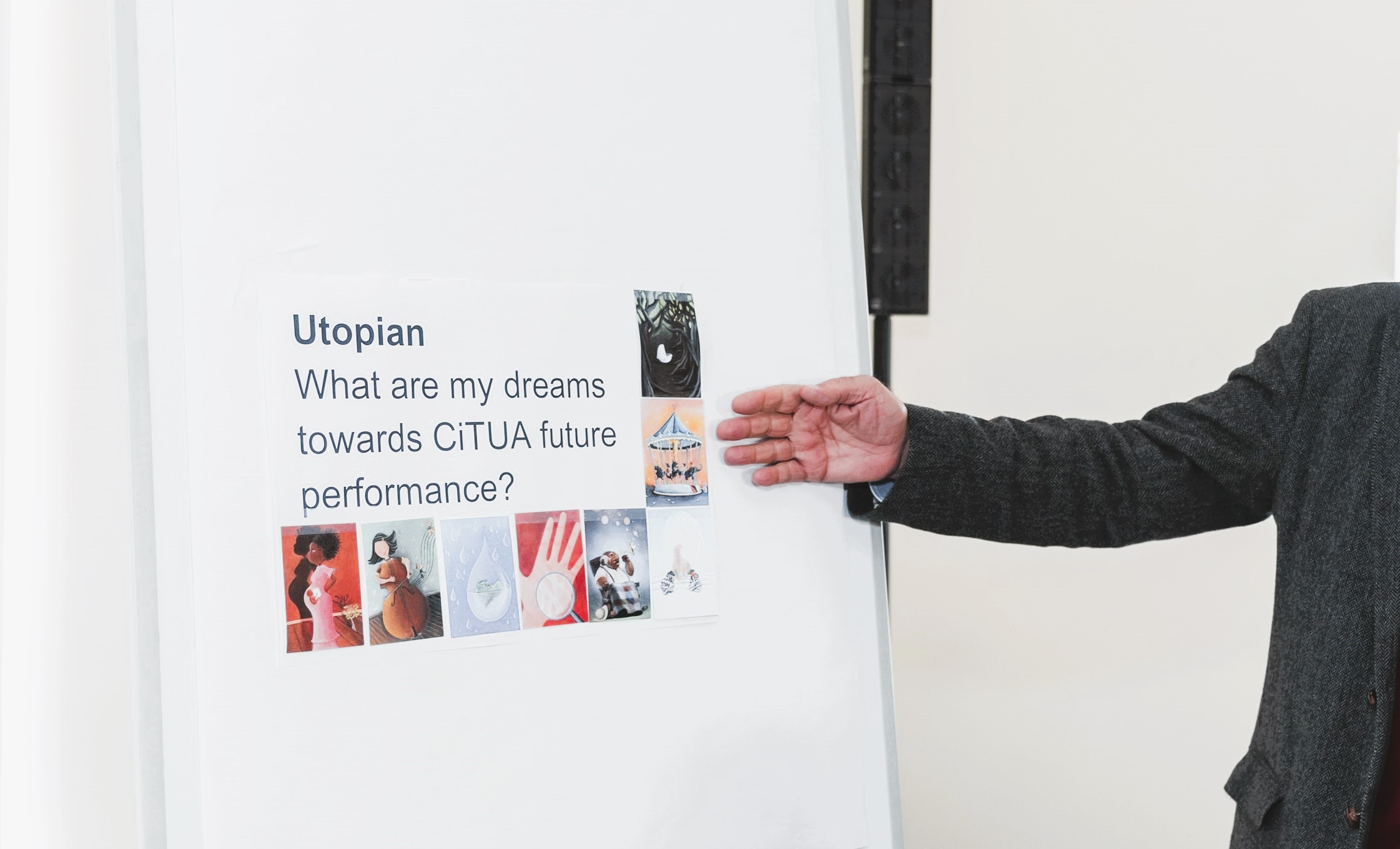The ever-changing landscape of knowledge
The goal of this research is to guide effective space planning, design and use of Knowledge infrastructures in Higher Education (HE). Following recent changes in Higher Education (HE) worldwide including increasing student enrolment and diversity, the emphasis on student- centered learning, competency-based education and the advances in technology with impact on learning activities, the spectrum and scope of knowledge-based environments are expected to continue to transform and evolve. Changes in the external and internal environment will cause all types of HE institutions to redevelop and retrofit their infrastructures to meet new needs and new standards and suggest the value of rethinking their spaces, thus addressing architecture and urban planning research with a new challenge.
Past projects
PINE – Places for innovation and networking in higher education
IN_LEARNING – Designing active learning environments
Space, Place and the future of living, learning and Playing
The focus of the research (children and youth spaces and places) is defined broadly, and includes different types of spaces and places designed and built for children and youth. The research covers different scales from urban (public) spaces to private (internal) spaces. The majority of these spaces remain in operation, so it is critical to recognize how to better support future interventions both in the design of new spaces or in the refurbishment of the existing stock. Besides the historical approach, the research cross aspects such as educational and social concerns, and child and youth policies, with the contribution given by architecture and urban disciplines towards a more democratic society with the design of better spaces for children and youth. The aim is: i) to built a comprehensive knowledge about different types of spaces and places designed and built for children and youth, covering different scales from urban (public) spaces to private (internal) spaces: living (domestic environments, orphanages, boarding schools, hospitals), learning (schools, kindergarten, libraries, museums, theatres, cultural spaces) and playing/recreation (playgrounds, streets, urban squares and parks, school yards, swimming pools, sports facilities, summer camps); ii) to understand the production process; and iii) to examine and compare different approaches and achievements in order to understand specific individual and collective visions and temporal contexts.
Past projects
ASAP – Atlas of School Architecture in Portugal _ Education, Heritage and Challenges
Healthy environments: local development and spatial strategies
The goal of this research is to advance the understanding on how built environments can be influenced to maximize health outcomes. The thematic of the healthy environments is of particular importance in face of the new challenges of modern global society (ageing, climate change, mobility, housing scarcity, security, among other). This importance is highlighted not only by the promotion of quality of life in urban contexts as advocated by WHO organization, but gradually by EU, considering health domain as a key element to promote healthy societies and cohesive territories. The approach is not focused in health (disease) but from a perspective of a healthy life and sustainable/healthy urban planning and design.
Past projects
CUCA Healthcare facilities: strategies for the future of cure and care
Unseen Seaside: A Multisensory Coastal Space Dimension Trough Invisibility
SPHERA Supporting the professionalisation of the health engineering studies and related areas in Asia
Urban and Architectural Legacy as a Local Development Resource
Through the studies on Architecture and Urban History the role of heritage is examined as a key for a sustainable urban environment. This knowledge is multidisciplinary and integrates the historic reflection on context, design and building processes, building technologies and materials as well as the economic and environmental aspects addressing an answer to contemporary built environment problems. It implies the achievement of specific design strategies for maintenance, conservation, restoration, rehabilitation, restructuration, transformation and extension, connecting theoretical knowledge and technic know-how. The approach is focused on European countries as well as in Postcolonial cities addressing African and Asian contexts following a broad scope in terms of subject area, period, region, and methodological emphasis.
Past projects
Knowledge of the history of architecture as a conservation, restoration, and rehabilitation instrument
Adaptive reuse of Modern Architecture
The goal of this research is to identify strategy and methods for the reuse of modern buildings and sites. Following the recent upgrades on heritage studies (Docomomo, Icomos 20th c., Unesco heritage Center), urban and architectural legacy is examined as a key for the future of a sustainable environment. This knowledge is multidisciplinary and integrates the historic reflection on the technics of materials as well as the economic and environmental aspects addressing a sustainable answer to contemporary built environment problems. It implies the achievement of specific strategies according to research based design strategies for reuse (maintenance, conservation, restoration, rehabilitation, restructuration, transformation and extension) connecting theory knowledge and technic know-how. While centered primarily on modern and contemporary architecture, the interests vary significantly by subject area, period, region, and methodological emphasis.
Past projecst
The house and the housing question: spatial and technical research
RMB Reuse of modernist buildings
EWV -Exchanging worlds visions: Modern architecture in Africa “Lusófona” (1943-1974) looking through Brazilian experience established since the 1930s
Sustainable Built Environments: Policies, Design and Technology
The research is focused on bio climatic architectural design and critical ecological design thinking, especially at the interface of building and urban scale. Emphasis is placed on the study of high performance buildings for the European context, and for developing countries in Africa and Asia – in articulation with cultural and social-economic variables, e.g. low-cost, affordable building.
Past projects
Polar Lodge – A sustainable lodge for research development in the Antarctic
Ecosystem Services and The Enlarged Urban Territories
The limits of the city are no more a comprehensive physical boundary. The urban structures and networks are now present in vast territories which consolidation is far to reach an understandable and coherent urban structure. In other hand, the need to ensure the continuity of main natural corridors and the preservation of essential ecosystems, becomes a crucial aspect to reduce natural hazards and to provide elements of identity and location for spaces of leisure and contact with nature, something that those areas are lacking. The possibility of using such protected areas and ecosystems to provide services to the population, is also a key issue to obtain public and private investment to guarantee their preservation.
Past projects
The trouble with sea-level rise adaptation: Think globally, fix locally?
Landscape Identity -Implications in Spatial Planning
Local Landscape Observatory
ROBUST – Unlocking Rural-Urban Synergies
Planning for the Enlarged City and the Consolidation of the Urban Structure
The urban space is no longer limited to the consolidated city and its expansion to accommodate the immense migrations from rural areas is no more processed in a continuous paradigm. The leap frog urbanization is now one characteristic of the urban development in rapid growth territories at the same time that the urban cores of those metropolitan and extensive urban areas are facing problems of demographic losses and gentrification. In other hand, the private dynamics goes, in almost cases, far in advance of the capacity of public authorities to provide social facilities and the main urban infrastructures that makes possible the integration of such new urban areas in a more interrelated and coherent urban network. In a context of scarce public resources and market economy environment, the capacity to plan the urban future have to emphasize the public domain, the consolidation of a clear urban hierarchy based on social facilities, the main infrastructure networks and the natural corridors. The combination of strategic planning with urban projects seems to be the most adequate methodology to face these new urban challenges, articulating the public vision for the future and a more equitable and efficient public and private investments.
Past projects
Public Spaces’ Service Value as an Urban System – An integrated assessment methodology
Place Identity and Intergrupal Relationships in Urban Contex: Implications in spatial management
PERCOM Equity and efficiency in the urbanization process: a land readjustment execution model
REABILITA Urban rehabilitation: from complexity to efficiency
Tourism and transformation dynamics in historical neighbourhoods: the case of Alfama in Lisbon
Evaluation and monitoring for complex and smarter cities and urban territories
Evaluationg the tourism impact on the rehabilitation of historic centre buildings
Planning towards the conservation of the historicl city – an urban morphological approach
Urban centralities in medium-sized towns

